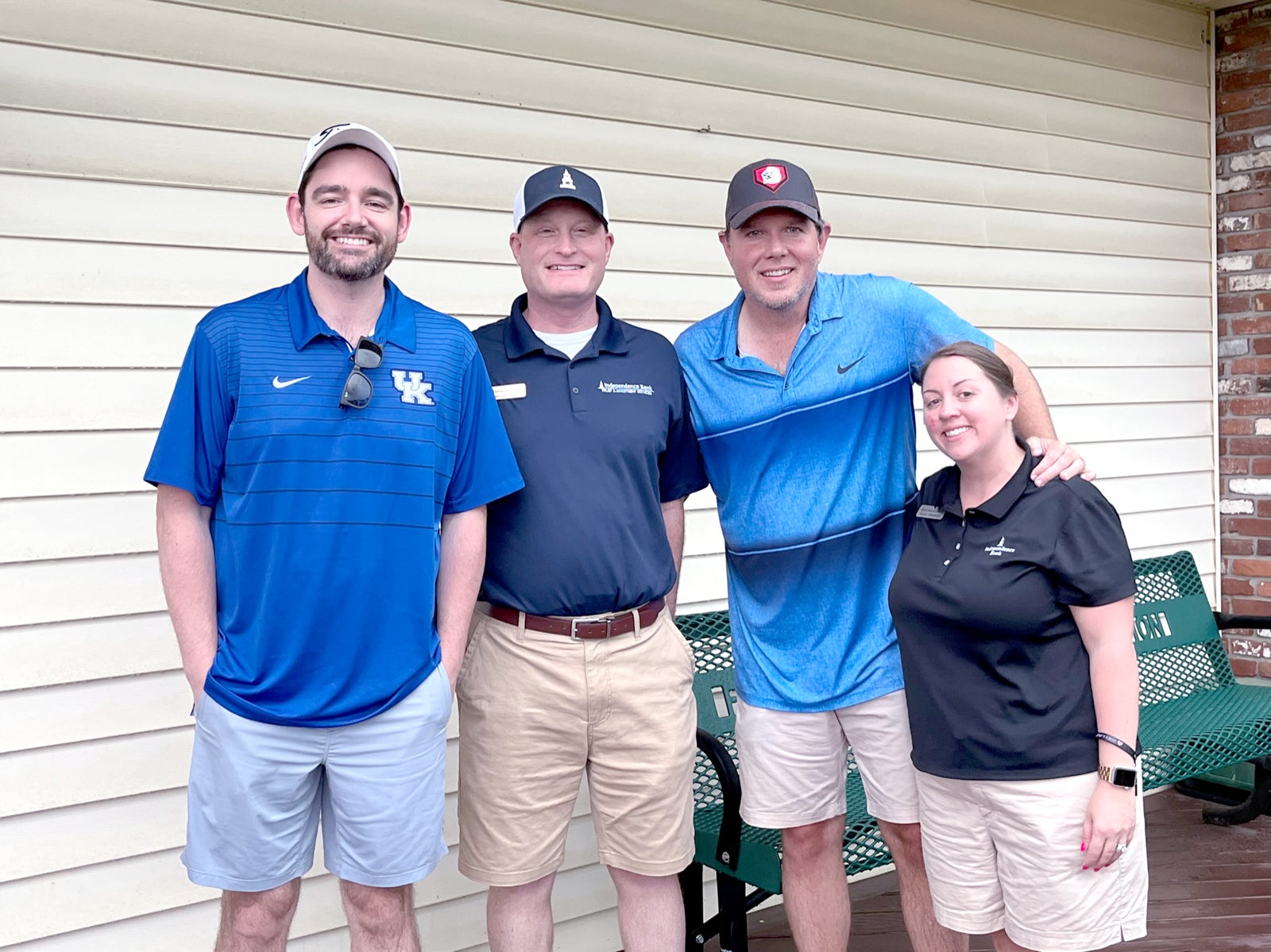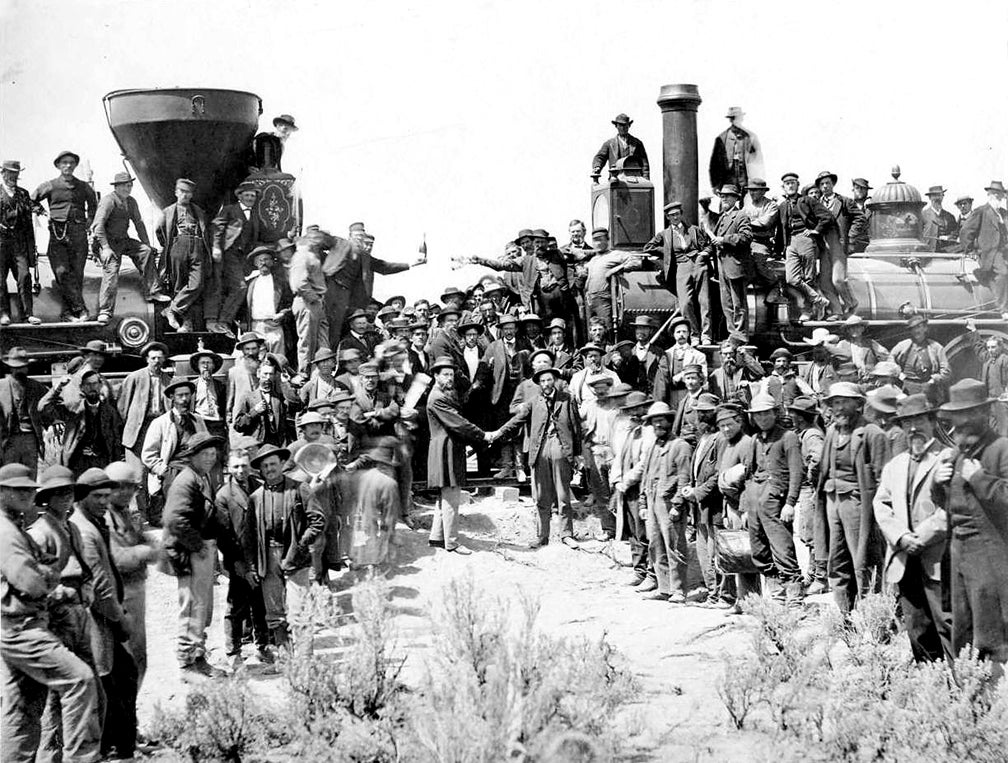By Philip Case
It has been said that the journey of a thousand miles begins with the first step. The same could be said of a lifetime hobby: it begins small and grows from there.
Frankfort’s Mel Trivette was just three when he received his first electric train, a layout on a 4×6-foot piece of plywood that was a gift from his father. That was the beginning of young Mel’s love for trains, which has grown exponentially across the last 56 years.
The result of what began with that little train set is now on display in the Keeneland Gallery at the Thomas D. Clark Center for the Kentucky History on the corner of Broadway and Ann streets. The layout’s “footprint” is 21×65 feet and features more than 100 cars on 625 feet of track at any time.
And it all belongs to a man who’s never ridden on a passenger train.
The display, which opened to 1,600 visitors on the first night of Candlelight Tradition, continues to brighten the holidays through the end of December. Hours are 10 a.m.-5 p.m. every Saturday; Sunday, Dec. 17, 1-5; and Dec. 27-29, 10-5. Regular KHS admission applies at all times: adults, $8; youths 6-18, $6; veterans, $6; children 5 and under, free; KHS and KJHS members, free.
Family affair
Trivette’s display has become a family affair. His wife, Sharon, and their sons Mark, 26, and Will, 18, all assist with set up and operation.
“I didn’t have any interest in trains,” said Sharon, “until I met Mel. I like to fish! I found trains were the way into Mel’s heart.”
As Mark and Sharon talk, son Mark operates the layout from a console within the oval and by way of remote controls, too. He works in information technology for the Kentucky State Police.
“I was born into it,” Mark says, laughing. “When dad gets tired of doing it then I guess I will take it over. It’s quite a learning curve to get familiar with how to put it up, but I’ve taken good notes.”
The Trivettes enjoy bringing the display to the community, having done it for 14 years.
Acquired over many years
The layout the Trivettes have was assembled over many years and at considerable cost, something Mel doesn’t care to share.
Originally much of the display belonged to members of the Bluegrass Railroad Club in Lexington. Mel said he was looking at the set up in the now-defunct Turfland Mall in 1985 – when the guy running it wanted a break.
“I knew him, so he let me run it. I joined the club and just became more and more involved to the point where I wanted to acquire some modules.”
“Modules” are 8’x32” sections. All were owned individually by members of the club.
“Little my little, one or two modules at a time, I acquired the modules until I had them all,” he said. “Then I put together this layout.”
All modules are built to a standard format with a main wiring harness. The first three tracks are stipulated by the plan, after that it’s whatever the owner wants to do. The modules are standardized to make them compatible and easily connected.
There are some 25 relays that control the signals. It takes three people about four days to set up the huge layout since all the tracks must line up for it to run. And it’s more than just tracks, trains and switches as the “journey” is through towns, villages and open countryside.
There’s even a spot along the way where the tracks pass by miniature storefronts featuring the names of some of Frankfort’s popular establishments.
Trivette, who’s the chief electrical inspector for the City of Frankfort and Franklin County, says he thinks it’s a lot easier to assemble and operate the outfit since he’s an electrician.
“It’s a real plus. When thing go wrong – and they do – I can usually figure it out. I can’t imagine trying to operate something this involved with more than just a passing knowledge of electrical workings.”
“He was gifted with mechanical inclinations,” said Sharon. “I call him Mr. Fixit.”
When the layout isn’t on display, it’s stored in the Trivittes’ basement. They don’t have any trains set up at their house.
“It used to be these displays were set up in malls in Lexington at Christmas time,” Mel said. “But no longer. When I was thinking of a place big enough (for the display), the History Center came to mind.”
When he first began sharing the display some 14 or more years ago, it was in one of the classrooms, later moving to the Brown-Forman Room at the back of the Center. Now it dominates the 6,000 square feet of the Keeneland Gallery.
Inspiring journey
“I’ve met a lot of people across the years,” Mel said, “and they’ve all become friends.
“I have to say my interest in trains as a child led me to become an electrician – and now an inspector. It would be tough to do it without a background in electricity.”
He says he’s taught his boys how to set it up and how to find problems. Neither, however, has shown an interest in becoming an electrician.
Younger son Will, however, says he wants to become a train engineer.
“Before I became an inspector,” Mel said, “I had my own electrical business and had plenty to do. There’s a shortage of private electricians and there’s no shortage of work.”
Delicate assembly
Trivette installed a four-inch Lexan barrier around the edge of the display.
“It serves two purposes,” he said. “First, it keeps the trains from falling to the floor should they jump the track and, secondly, it serves as something of a psychological barrier to keep people from touching them.
“Understandably, most kids want to touch the trains. The parents do a good job watching their children.”
Prior to the Lexan there was a rope line, three feet from the display.
“That made it a little more impersonal and hard for the kids to view,” Mel said. “This is much better while still putting up that psychological barrier I mentioned.”
While he won’t discuss the value of the display, the “parts” are individually expensive making the whole even more so. Trivette had catalogs available that are distributed by Lionel, the name in model trains since 1900. The catalog contains everything for the serious enthusiast – or for those just looking to get started.
For instance, a Southern Pacific AC-9 locomotive and tender car, is a penny under $2,000. The catalog shares the history of the engine and the replica is 32 inches long. The tender was used to carry fuel and water for the locomotive.
The cars aren’t as expensive as the locomotives, but none is cheap.
Considering the Trivettes have up to 100 locomotives, tenders and cars running at any one time, it’s easy to see this hobby of a lifetime is a labor of love.
























